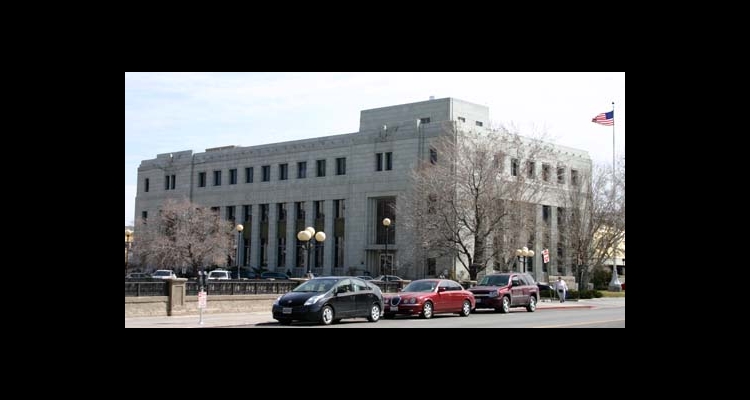Frederick DeLongchamps
Frederick DeLongchamps—also spelled Fredric DeLongchamps—was one of Nevada's most prolific architects. Born in Reno in 1882, he learned the building trades from his French Canadian father, a carpenter. Eventually, young Frederick studied mining at the University of Nevada. His doctor warned him not to go underground because of weak lungs, so upon graduation, DeLongchamps took a job as a draftsman for the U.S. Surveyor.
After the 1906 earthquake, DeLongchamps traveled to San Francisco to join the army of people rebuilding thousands of structures. According to tradition, he apprenticed with an architect and learned how to design buildings.
DeLongchamps returned to Nevada in 1907 and began working as an architect. After two years spent on small projects, he entered a competition to design the new Washoe County Courthouse. The county selected the young man's plans, giving him a notable benchmark at the beginning of his career. His courthouse was to become Nevada's largest, most sophisticated county building constructed up to that time.
The architect ultimately designed nine county courthouses including two in California, major additions to the Nevada State Capitol, mansions for the Mapes family and George Whittell, and over five hundred other buildings. DeLongchamps won awards for his buildings at the 1915 Panama-Pacific International Expositions in San Francisco and San Diego. His Riverside Hotel and downtown post office, both neighbors of his Washoe County Courthouse, form much of the core of Reno's historic downtown. With the trio of the Heroes Memorial, Supreme Court, and Ormsby County Courthouse facing his work on the State Capitol, DeLongchamps also dominates the downtown of Carson City. In addition, the architect's designs make up much of the older part of the University of Nevada, Reno campus. Most of his work was in Northern Nevada, but other DeLongchamps buildings appear in the southern part of the state as well as in California and Florida, where he held licenses.
DeLongchamps was known for giving his clients exactly what they wanted. Architecture is often defined by the avant-garde, but the resulting structures may be impractical or undesirable from the patron's point of view. DeLongchamps was a remarkable artist; nevertheless his designs remained considerate of those who would have to use his buildings.
In 1919, he became the official Nevada State Architect, the only person to hold that title. He also served as president of the Reno chapter of the American Institute of Architects and helped develop standards for the profession in Nevada.
Despite his long career in architecture, DeLongchamps never lost his love of mining and continued to invest in the industry. During the Great Depression, the architect's preoccupation with mining threatened the economic survival of his design firm. In 1939, he formed a partnership with George O'Brien, who apparently balanced DeLongchamps's artistic genius with a pragmatic business sense.
Because DeLongchamps practiced architecture for nearly sixty years, his work spanned the neoclassical, art deco, and International styles. He also employed the styles of Gothic, Tudor, Mediterranean, and English Cottage Revival. He and O'Brien agreed on a joint retirement in 1965. DeLongchamps died four years later in 1969, having left a legacy of hundreds of buildings.
Article Locations
Related Articles
Further Reading
None at this time.

